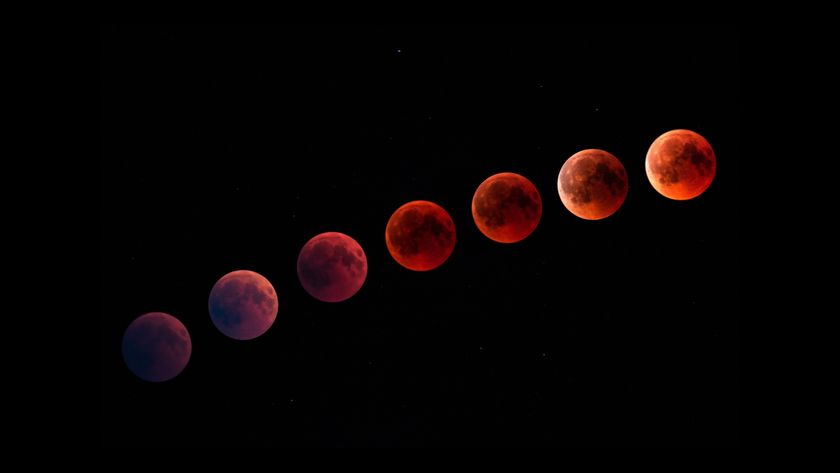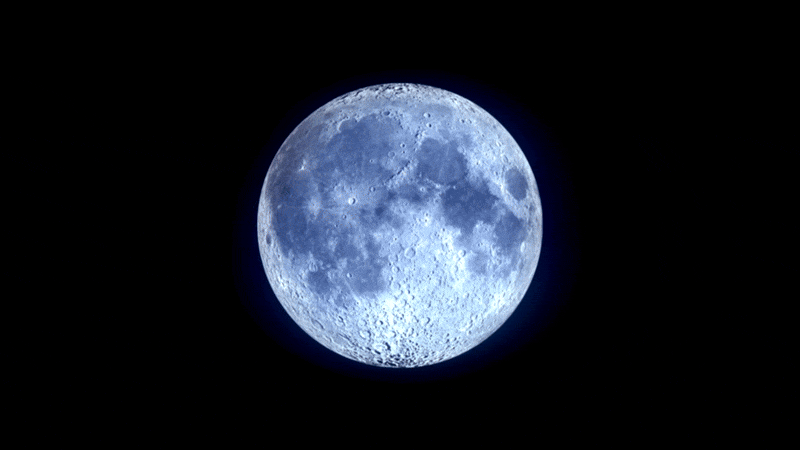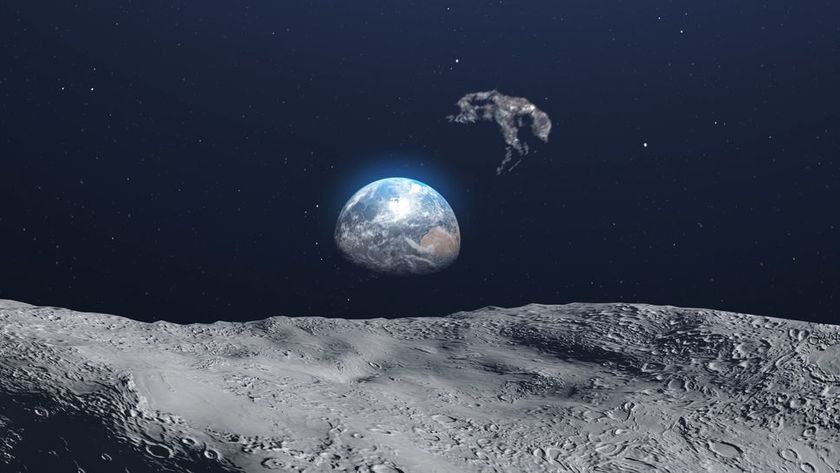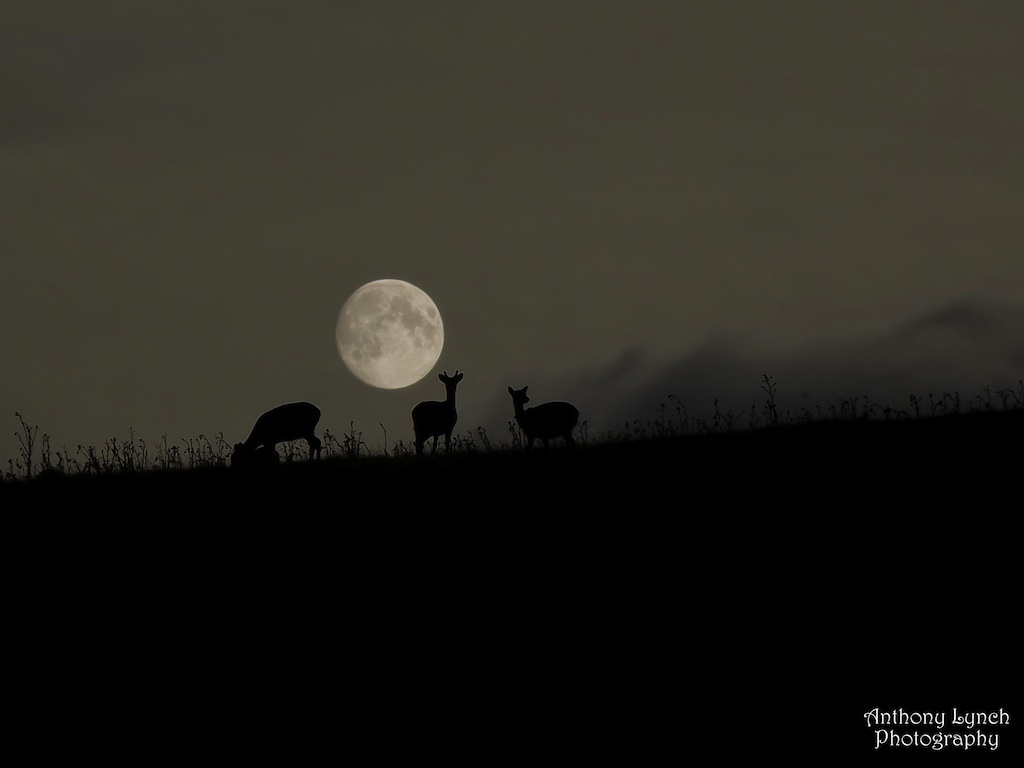
Editor's Note: Find out how to watch a webcast about the Harvest Moon airing tonight (Sept. 8) will Space.com's latest story - Full Harvest Moon Dominates Night Sky Tonight: Watch It Live
The full Harvest Moon will light up the night sky on Monday (Sept. 8), and this year it comes with an extra bounty. September's full moon will cap a trio of back-to-back "supermoons" for the Northern Hemisphere summer, according to NASA.
The moon will reach its full phase when it reaches the spot in the sky opposite from the sun. That moment will occur Monday at 9:38 p.m. EDT (0138 GMT). Monday's full moon is the one nearest to the September equinox this year, giving it the moniker of Harvest Moon by the usual definition.
Although we associate the Harvest Moon with autumn, this year's version is actually the last full moon of the summer season. The 2014 Harvest Moon comes about as early in the calendar as possible. However, Harvest Moons can occur as late as Oct. 7. [Amazing Photos of the 2013 Harvest Moon]
Although on average, an October Harvest Moon happens once about every four years, this figure can be deceptive. The last October Harvest Moon, for example, was in 2009, but the next won't occur until 2017. Conversely, after 2017, we need wait only three years until 2020 for the next October Harvest Moon.
A September supermoon
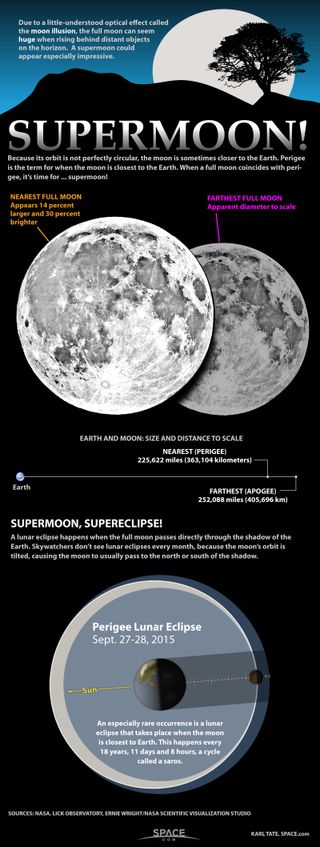
This full moon also marks the third in a trilogy of "supermoons" this summer. July and August's full moons both fell during the moon's perigee — when it was at the closest point in its orbit to Earth. While the August supermoon was the closest, this month's full moon also falls during perigee.
Many think that the Harvest Moon remains in the night sky longer than any of the other full moons we see during the year, but that is a myth. The Harvest Moon's claim to fame is that instead of rising its normal average of 50 minutes later each day, it rises only a little later each night, providing farmers with extra moonlit evenings to reap their crops.
Get the Space.com Newsletter
Breaking space news, the latest updates on rocket launches, skywatching events and more!
This unusually small daily lag in the time of moonrise occurs because the moon is traveling along the part of the ecliptic — the apparent path of the sun with respect to Earth's sky — that makes the smallest angle with the eastern horizon as seen from northern latitudes.
Through the course of three nights — Sept. 7 to Sept. 9 — the rising of the moon comes just under 38 minutes later each night, based on an average taken from a small sample of North American cities. The night-to-night difference in moonrise times is greatest for the more southerly locations. (Miami, for instance, sees moonrise come an average of 46 minutes later in the three-night sample).
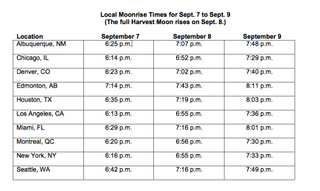
Great Harvest Moon of the north
The Harvest Moon effect is greater the farther north an observer is located.
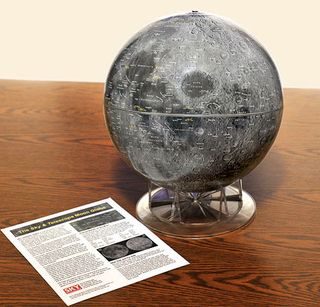
In contrast, for those living in the Southern Hemisphere, the ecliptic at this time of year appears almost perpendicular (at nearly a right angle) to the eastern horizon. As such, the difference for the time of moonrise exceeds the average of 50 minutes per night. In Sydney, Australia, for instance, the night-to-night difference amounts to 70 minutes.
For those who live near the Arctic Circle, however, the moon does indeed appear to rise about the same time each night around the time of the Harvest Moon. And for those who live even farther to the north, a paradox: The moon appears to rise earlier, not later.
In Thule, Greenland (latitude 76.5 degrees north), for example, the times of moonrise on Sept. 7, 8 and 9 will be, respectively, 7:19 p.m., 7:06 p.m. and 6:54 p.m. local time. So from Thule, the moon will seem to rise an average of 13 minutes earliereach night.
Editor's Note: If you take an amazing image of the Harvest Moon or any other night sky view that you'd like to share for a possible story or image gallery, please contact managing editor Tariq Malik at spacephotos@space.com.
Joe Rao serves as an instructor and guest lecturer at New York's Hayden Planetarium. He writes about astronomy for Natural History magazine, the Farmer's Almanac and other publications, and he is also an on-camera meteorologist for News 12 Westchester, N.Y.Follow us @Spacedotcom, Facebook and Google+. Original article on Space.com.
Join our Space Forums to keep talking space on the latest missions, night sky and more! And if you have a news tip, correction or comment, let us know at: community@space.com.

Joe Rao is Space.com's skywatching columnist, as well as a veteran meteorologist and eclipse chaser who also serves as an instructor and guest lecturer at New York's Hayden Planetarium. He writes about astronomy for Natural History magazine, the Farmers' Almanac and other publications. Joe is an 8-time Emmy-nominated meteorologist who served the Putnam Valley region of New York for over 21 years. You can find him on Twitter and YouTube tracking lunar and solar eclipses, meteor showers and more. To find out Joe's latest project, visit him on Twitter.
